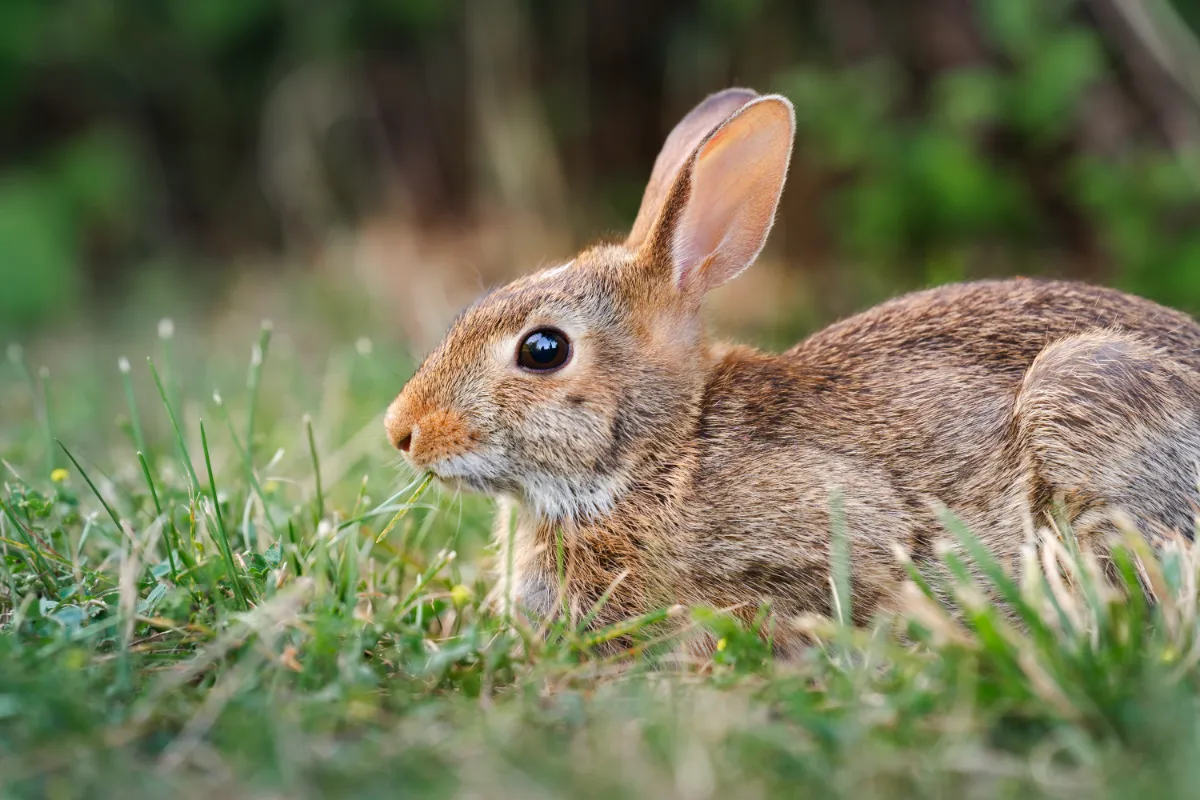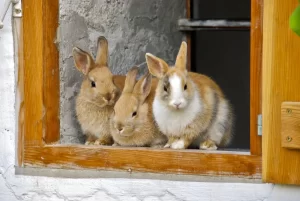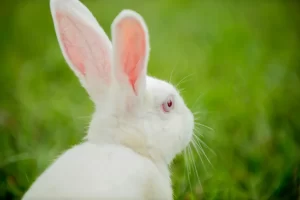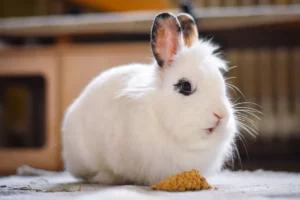Do you ever wonder what goes on in the world of rabbits after the sun sets? Are rabbits nocturnal animals, scurrying and hopping under the moonlight?
In this article, we will delve into the behavior patterns of rabbits and explore their activity during both the day and the night. By understanding the factors that influence their activity and their sleep patterns, we will uncover the truth about whether rabbits truly are nocturnal creatures.
Get ready to discover the secrets of these elusive creatures.
In This Article
- 1 Key Takeaways
- 2 The Behavior Patterns of Rabbits
- 3 Rabbit Activity During the Day
- 4 Rabbit Activity During the Night
- 5 Factors Influencing Rabbit Activity
- 6 Sleep Patterns of Rabbits
- 7 The Truth About Rabbit Nocturnality
- 8 Frequently Asked Questions
- 8.1 What Are the Different Sleep Patterns of Rabbits?
- 8.2 How Do Factors Like Temperature and Food Availability Influence the Activity of Rabbits?
- 8.3 Are There Any Specific Behaviors or Signs That Indicate a Rabbit’s Nocturnal Activity?
- 8.4 What Are Some Common Misconceptions About Rabbit Nocturnality?
- 8.5 Can Rabbits Adjust Their Activity Patterns Based on Their Environment or Human Interaction?
- 9 Conclusion
Key Takeaways
- Rabbits are not exclusively active during the night, they are crepuscular animals and are most active during dawn and dusk.
- Understanding their natural instincts and environment is crucial in promoting their well-being.
- Rabbits have a polyphasic sleep cycle, sleeping in multiple short periods rather than one long stretch.
- Rabbits’ ability to stay alert even while sleeping is an evolutionary adaptation that ensures their survival in the wild.
The Behavior Patterns of Rabbits
You should observe the behavior patterns of rabbits to understand their habits better.
When it comes to mating, rabbits are known for their promiscuous nature. Male rabbits, or bucks, will engage in elaborate courtship behaviors to attract a female, or doe. These behaviors include chasing, boxing, and even leaping in the air. Once a doe is receptive, mating occurs quickly and can be quite aggressive.
As for foraging habits, rabbits are herbivores and spend a significant amount of time grazing on grasses, leaves, and other plant materials. They’ve a unique digestive system that allows them to extract maximum nutrients from their food.
Rabbits are also known to exhibit crepuscular behavior, meaning they’re most active during dawn and dusk.
Understanding these behavior patterns will help you provide the best care for your rabbits, whether you’re a pet owner or a professional serving others.
Rabbit Activity During the Day
While rabbits are primarily known for their crepuscular behavior, they can occasionally be active during the day as well. This behavior can vary depending on factors such as the rabbit’s age, health, and environment. Some rabbits may exhibit more daytime activity if they feel safe and secure in their surroundings.
One of the key factors influencing the activity patterns of rabbits is their feeding habits. Rabbits are herbivores and primarily feed on grasses, leafy greens, and hay. They have a unique digestive system that requires them to graze throughout the day. This means that they need to be active during both day and night to meet their nutritional needs.
Additionally, rabbit social interactions can also play a role in their activity patterns. Rabbits are social animals and enjoy the company of other rabbits. They may engage in play, grooming, and other social behaviors during the day, which can increase their overall activity levels.
In conclusion, while rabbits are generally crepuscular, they can be active during the day as well. Their feeding habits and social interactions can influence their daytime activity patterns. Providing a safe and stimulating environment for rabbits can encourage them to be active and engaged during the day.
| Daytime Activity | Factors |
|---|---|
| Feeding habits | Grazing on grasses, leafy greens, and hay |
| Social interactions | Engaging in play, grooming, and other social behaviors |
| Environment | Feeling safe and secure in their surroundings |
Rabbit Activity During the Night
Rabbits’ nocturnal activity can be influenced by factors such as their natural instincts, environment, and available food sources. Understanding their behavior during the night is crucial for those who desire to serve these animals. Here are three key factors that influence rabbits’ nighttime behavior:
- Nighttime feeding: Rabbits are herbivores, and they often forage during the night when their food sources are more abundant and there’s less competition. Their digestive system is designed to process a high-fiber diet, so they spend hours grazing on grasses, herbs, and vegetables during the night.
- Predator avoidance: Rabbits are prey animals, and being active at night helps them avoid predators such as foxes, owls, and coyotes. Their ability to navigate in the dark and their keen senses of hearing and smell allow them to stay alert and respond quickly to potential threats.
- Environmental factors: The availability of shelter and cover plays a significant role in rabbits’ nocturnal behavior. They seek out areas with dense vegetation, burrows, or other hiding spots to feel safe and protected during the night.
Understanding these factors can help those serving rabbits create a suitable environment that promotes their natural behavior and overall well-being.
Factors Influencing Rabbit Activity
Considering the factors influencing rabbit activity, it’s important to understand their natural instincts and the environment they inhabit.
Factors affecting rabbit activity include their circadian rhythm, which is the internal biological clock that regulates their sleep-wake cycle. Rabbits are crepuscular animals, meaning they’re most active during dawn and dusk. This is because their natural habitat provides them with safety during these times, as predators are less likely to be active.
Additionally, rabbits are highly sensitive to changes in light intensity, which can affect their activity levels. They’ve evolved to be vigilant and cautious, constantly scanning their surroundings for potential threats.
Understanding these factors can help us create a suitable environment for rabbits, ensuring their well-being and promoting their natural behaviors. By providing them with a safe and stimulating environment, we can serve rabbits and help them thrive.
Sleep Patterns of Rabbits
You should be aware that rabbits typically sleep for several short periods throughout the day and night. Despite popular belief, rabbits aren’t strictly nocturnal animals. They’ve a unique sleep cycle that allows them to be active during both the day and night. Here are three key points to understand about the sleep patterns of rabbits:
- Polyphasic sleep: Rabbits have a polyphasic sleep cycle, meaning they sleep in multiple short periods rather than one long stretch. This allows them to be alert and ready to react to potential dangers at any time.
- Daytime napping: Unlike many nocturnal animals, rabbits also take naps during the day. They may have shorter periods of sleep during daylight hours, but they still require this rest to maintain their energy levels.
- Light sensitivity: Rabbits are sensitive to light, and their sleep patterns can be influenced by the amount of light they’re exposed to. They’re more likely to be active during dim light conditions and sleep during brighter daylight hours.
Understanding the sleep patterns of rabbits is essential for providing them with a suitable environment that promotes their well-being. By ensuring they’ve access to quiet and comfortable spaces for their daytime napping and respecting their unique sleep cycle, you can help rabbits thrive and live a healthy and balanced life.
The Truth About Rabbit Nocturnality
To truly understand the truth about rabbit nocturnality, it’s important to recognize that they aren’t exclusively active during the night. Contrary to popular belief, rabbits are crepuscular animals, meaning they’re most active during dawn and dusk.
However, their sleep patterns can vary depending on their environment and individual preferences. Rabbits have a unique sleep cycle characterized by short periods of sleep and frequent awakenings. They’re light sleepers and have the ability to stay alert even while sleeping. This is an evolutionary adaptation to ensure their survival in the wild.
Misconceptions about rabbit nocturnality arise from their natural behavior of being more active during low-light conditions. Understanding their sleep cycles and behaviors can help rabbit owners provide a conducive environment for their pets’ well-being.
Frequently Asked Questions
What Are the Different Sleep Patterns of Rabbits?
Rabbits have various sleep patterns, including polyphasic and crepuscular sleep. They sleep in short bursts throughout the day and night, with each sleep period lasting only a few minutes. The duration and quality of their sleep depend on environmental factors.
How Do Factors Like Temperature and Food Availability Influence the Activity of Rabbits?
Temperature preferences and food availability greatly influence rabbit activity. Rabbits are more active during cooler temperatures, seeking shade during hotter times. Predators also play a role, as rabbits are more cautious and tend to be less active when threats are present.
Are There Any Specific Behaviors or Signs That Indicate a Rabbit’s Nocturnal Activity?
Rabbit circadian rhythm can exhibit signs of nocturnal behavior. Look for increased activity during the night, such as hopping, exploring, and feeding. Additionally, their eyes may appear more alert and their ears more sensitive to sounds.
What Are Some Common Misconceptions About Rabbit Nocturnality?
Common myths about rabbit nocturnality include the belief that they are strictly nocturnal. However, scientific studies have shown that rabbits are most active during dawn and dusk, known as crepuscular behavior.
Can Rabbits Adjust Their Activity Patterns Based on Their Environment or Human Interaction?
Rabbits can adjust their activity patterns based on their environment and human interaction. In captivity, their activity levels are influenced by artificial lighting. Understanding this behavior helps serve their needs effectively.
Conclusion
In conclusion, rabbits aren’t considered nocturnal animals. While they’re most active during dawn and dusk, they also exhibit diurnal and crepuscular behavior.
Interestingly, a study conducted on wild rabbits revealed that they spent an average of 8.4 hours per day being active, with the highest activity levels observed during the early morning and late afternoon.
Understanding the activity patterns of rabbits is crucial for their welfare and for those who keep them as pets.





